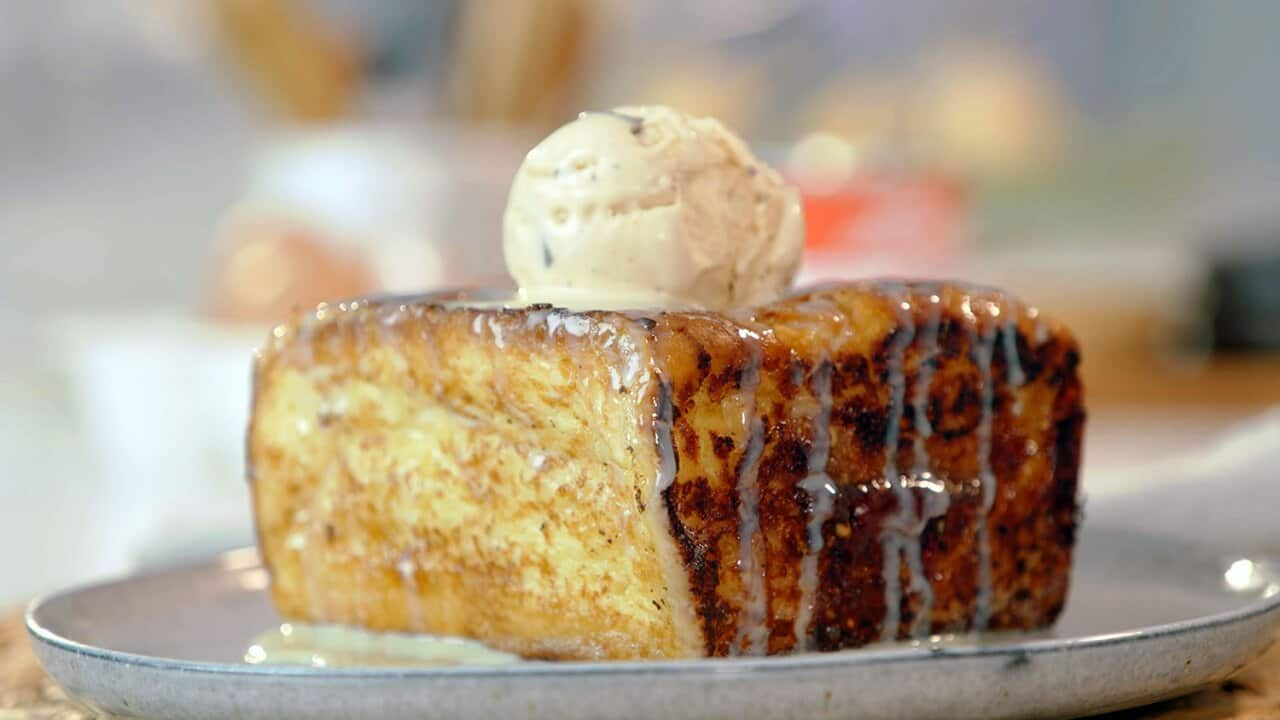Vendors or 'hawkers' selling noodles from carts on the street were once a part of the furniture in Hong Kong. The dish known as () was a popular dish since the 1950s. It was quick, affordable and easy to come by street-side.
However, by the 1970s, city authorities began to on hawkers to improve hygiene and the flow of traffic. Today, you need to get your cart-noodle fix from restaurants. I tried them on a trip to Hong Kong in 2008. My friends there brought me to one that served them and I was hooked. The best thing about Hong Kong-style cart noodles is that you get to choose the noodle type, ingredients and even the soup base. Back then, I ordered a large bowl of rice vermicelli and fried egg noodles with fish cakes, chicken tendon, pig's blood and salted beans in a spicy pork bone soup base.
The best thing about Hong Kong-style cart noodles is that you get to choose the noodle type, ingredients and even the soup base. Back then, I ordered a large bowl of rice vermicelli and fried egg noodles with fish cakes, chicken tendon, pig's blood and salted beans in a spicy pork bone soup base.

Hong Kong cart noodles is a dish with an array of toppings you can choose from. Source: Angie Cui
Traditionally, you could choose from 30 different ingredients: from various types of braised meat to fish cakes and crab sticks. You could also choose between eight to 10 types of noodles, like thick or thin noodles, egg noodles and rice noodles. Just in case this dish didn't have enough options already, you could also select from five to seven soup bases, including meat bone soup and mushroom broth and were typically served in a container as an easy takeaway meal.
The best thing about Hong Kong-style cart noodles is that you get to choose the ingredients.
Thinking about this dish makes me miss it and my friends who I enjoyed eating it with. The only way I can recreate the experience where I live in Australia is to make it myself, since I'm yet to find a restaurant near me that makes it. Lucky for me, my Hong Kong friends have shared their recipe and I have been making it ever since.
Even though cart noodles typically involves an array of choices, you can narrow them down if you want to make them at home. For example, you can give your guests a choice between wonton, vermicelli or skinny rice noodles - all types are quick to boil. You can also give your guests a limited list of ingredients to choose from, like fried lean pork, fish balls, spicy lamb and pickles.
You can also give your guests a limited list of ingredients to choose from, like fried lean pork, fish balls, spicy lamb and pickles.

If you make Hong Kong cart noodles at home, you can limit the number of toppings, but try different combinations each time. Source: Angie Cui
For the soup base, I often include two options: pork bone and mushroom. I usually prefer the pork bone, while my husband loves the mushroom one. After each of my family customises their own cart noodles, I ladle broth on top then garnish their bowls with chopped coriander and spring onions.
Hong Kong cart noodle party
Serves 4 to 8
Ingredients
- 400-500 g wonton noodles, thin egg noodles and/or vermicelli
- 1 tsp sesame oil
- 8-12 cooked fish balls, fish cakes, scallop balls and crab sticks
- 500 g stir-fried sliced lamb
- 500 g fried tofu (optional)
- 16 rice cakes (optional)
- 2 bok choy or 1 Chinese cabbage, chopped and boiled/steamed
- 2 tbsp oyster sauce
- 1 tbsp soy sauce
- Coriander, chilli and spring onion, to serve
- Tea eggs (optional) and pickles such as suan cai (pickled Chinese cabbage), to serve
Three types of broth
Pork or Chicken
- 4 tbsp ginger, minced
- 3 garlic cloves, chopped
- 3 spring onions, chopped
- 1 tbsp Shaoxing rice wine
- 1 tsp salt
- 1 kg braised pork with bone or whole chicken, cut into small pieces
Mushroom
- 300 g oyster mushrooms
- 2 tsp salt
Method
- For the stock, combine minced ginger and chopped spring onions. Put both into a large saucepan with either 1 kg pork bones, chicken bones or oyster mushrooms with 3-4 litres of water and bring to boil. Add salt and the Shaoxing rice wine and then reduce the heat and simmer for 30 minutes.
- Soak the noodles in hot water for 3 minutes, depending on thickness. Drain well then add 1 tsp of sesame oil through each batch of noodles to prevent the strands from sticking together.
- Chop the cooked greens and place them on the table with noodles, braised pork/chicken pieces, steamed fish balls, fried tofu puffs and crab sticks, coriander, chilli, sauces and tea eggs (optional).
- Blanch each of the noodle servings in the stock of your choosing for a minute or so, then return to their bowl with a large ladle of hot stock. Top with cooked greens, braised meats, more stock and garnish with spring onions, coriander, chilli and pickles.
Note: To make the experience even more interactive, place the stock pots in the centre of your table for guests to help themselves.
FLAVOURS OF HONG KONG

Hong Kong chicken pie: the unassuming cousin of the egg tart








